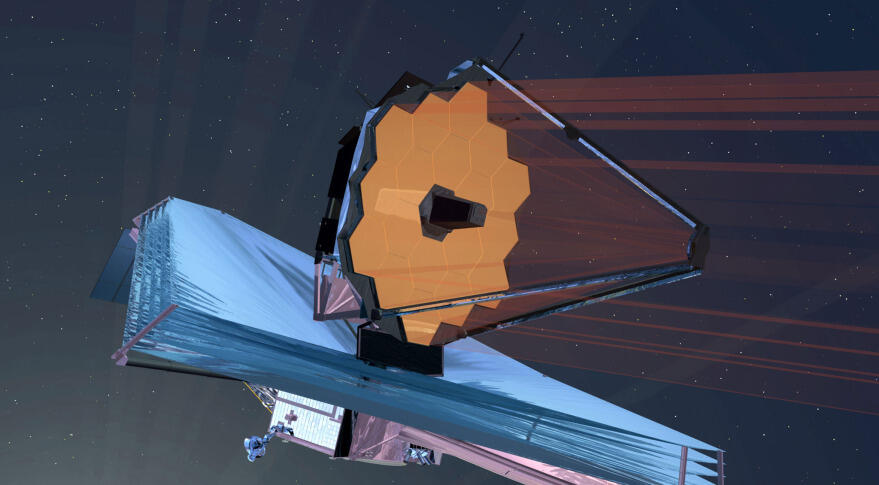ADELAIDE, Australia — NASA announced Sept. 28 that the launch of the James Webb Space Telescope mission, which had been planned for next fall, will now be delayed until the spring of 2019.
In a statement posted on the agency’s website, NASA said that an assessment of overall work needed to complete integration and testing of the $8 billion spacecraft led to the decision to postpone the launch by about half a year.
“The change in launch timing is not indicative of hardware or technical performance concerns,” Thomas Zurbuchen, NASA associate administrator for science, said in the statement. “Rather, the integration of the various spacecraft elements is taking longer than expected.”
The release noted that testing of the telescope and its instruments “continues to go well and on schedule” in a thermal vacuum chamber at the Johnson Space Center but that the spacecraft bus and sunshield, being assembled at a Northrop Grumman facility in California, were suffering delays.
“The combination of some integration activities taking longer than initially planned, such as the installation of more than 100 sunshield membrane release devices, factoring in lessons learned from earlier testing, like longer time spans for vibration testing, has meant the integration and testing process is just taking longer,” said Eric Smith, NASA’s JWST program manager, in the statement.
“Considering the investment NASA has made, and the good performance to date, we want to proceed very systematically through these tests to be ready for a spring 2019 launch,” Smith said.
The delay was announced now as NASA was obligated, under an agreement with the European Space Agency for the launch of JWST on an Ariane 5, to request a desired launch window a year before launch. NASA was approaching that one-year point under the previous schedule, which projected an October 2018 launch.
The announcement itself, though, came as something as a surprise. Project officials had said in recent months that they still had plenty of schedule reserve to accommodate issues as JWST went through final integration and testing, although those levels had dropped somewhat below recommended levels. A presentation by Paul Hertz, director of NASA’s astrophysics division, at a National Science Foundation meeting Sept. 27 still listed a 2018 launch date for JWST.
There were, nontheless, fears in the astronomy community that JWST’s launch could be delayed. “There’s some concern that they might be running out of funded schedule reserve,” said Alan Boss, an astronomer at the Carnegie Institution and a member of the Astrophysics Advisory Committee, at a July meeting of the NASA Advisory Council’s science committee. “There’s some concern, but the JWST folks are confident they will overcome the remaining hurdles and get it done on time.”
Another factor not mentioned in the NASA announcement was a potential conflict with ESA’s BepiColombo mission to Mercury, scheduled to launch in October 2018 on an Ariane 5. The European spaceport at Kourou, French Guiana, is not able to accommodate BepiColombo and JWST simultaneously, and it appeared that BepiColombo’s limited launch window gave it priority.
“BepiColombo has rights to launch before James Webb does,” Boss said at the July committee meeting. “You really want to have BepiColombo long gone before you move in and start taking over.”
NASA said in its Sept. 28 statement that the program’s current budget will accommodate the changed launch date.
Source: http://bit.ly/2hzdCEX











